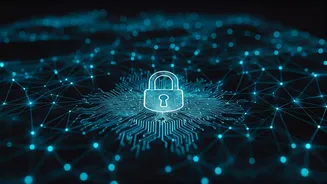The Cancel Button Myth
A viral claim has suggested that pressing the 'cancel' button twice at an ATM can shield you from fraud. This widespread rumor has prompted the government's
Press Information Bureau (PIB) to step in and debunk it. The PIB confirmed that the claim lacks any basis in reality. The RBI (Reserve Bank of India) also clarified that there is no advisory to this effect. The sole purpose of the 'cancel' button is to end a transaction if you make an error or wish to exit the process; it provides no extra security against ATM fraud or scams. The myth likely gained traction because of the public's heightened fear of financial crime and their desire for simple solutions to complex problems.
ATM Fraud Realities
While pressing the 'cancel' button twice does not offer any special protection, it doesn't mean ATM fraud is nonexistent. Unfortunately, several threats are present. One of the first things to keep in mind is to avoid seeking assistance from strangers. ATM machines have many forms of potential tampering and fraud techniques that criminals use to steal money and financial information. It is crucial to be alert when using an ATM. Inspect the card slot and the keypad of the ATM before you insert your card. Criminals use these two things to steal your financial information.
Immediate Actions Required
If you suspect that your ATM card has been lost, stolen, or trapped within the machine, it's critical to take immediate action. The first step involves contacting your bank promptly and requesting that they block the card. This will prevent any unauthorized transactions and limit potential financial losses. Timely communication is critical; the faster you act, the less risk you face. Reporting the situation immediately allows the bank to investigate, potentially trace fraudulent activities, and issue you a replacement card quickly.
Proactive Security Measures
Along with swift action in emergencies, implementing proactive security measures can significantly enhance your protection. One key step is to enable SMS and email alerts from your bank. These alerts provide instant notifications whenever a transaction occurs at an ATM, allowing you to promptly detect any unauthorized withdrawals. Additionally, change your PIN regularly, every three to six months. Avoid using easily guessable combinations such as sequential numbers (1234) or repetitive digits (2222). Opt for strong, unique PINs to protect your accounts and sensitive financial information.













